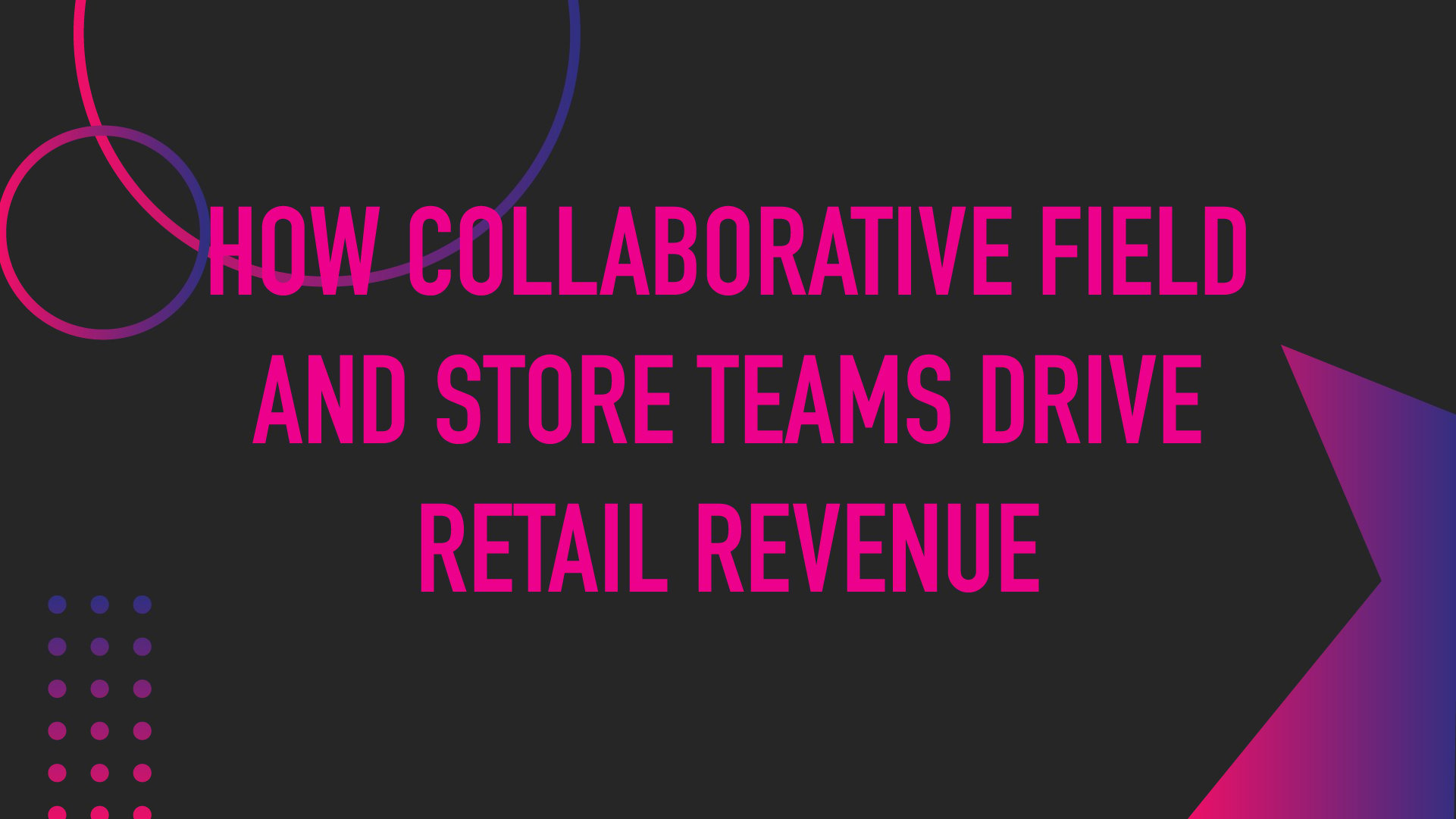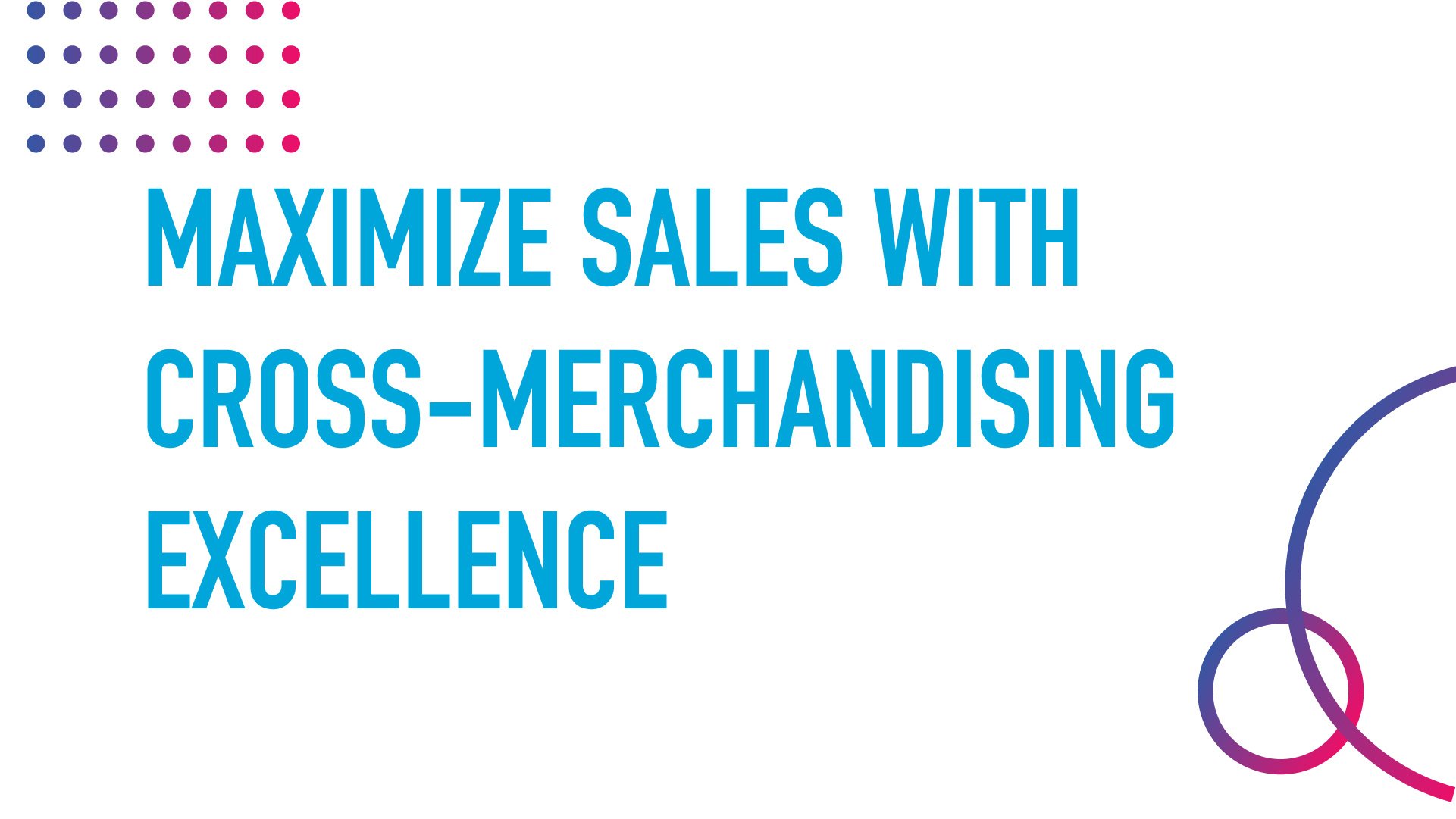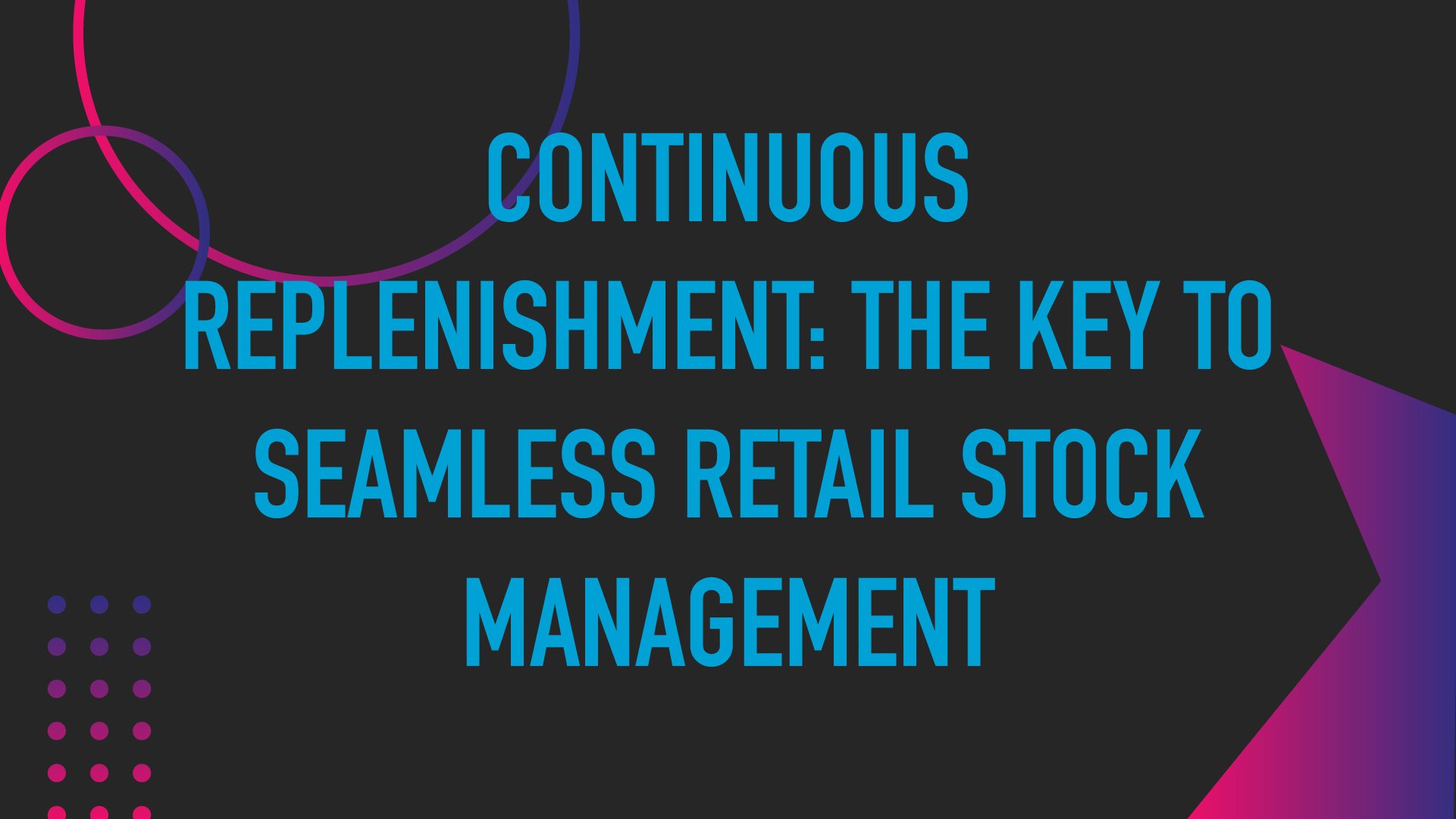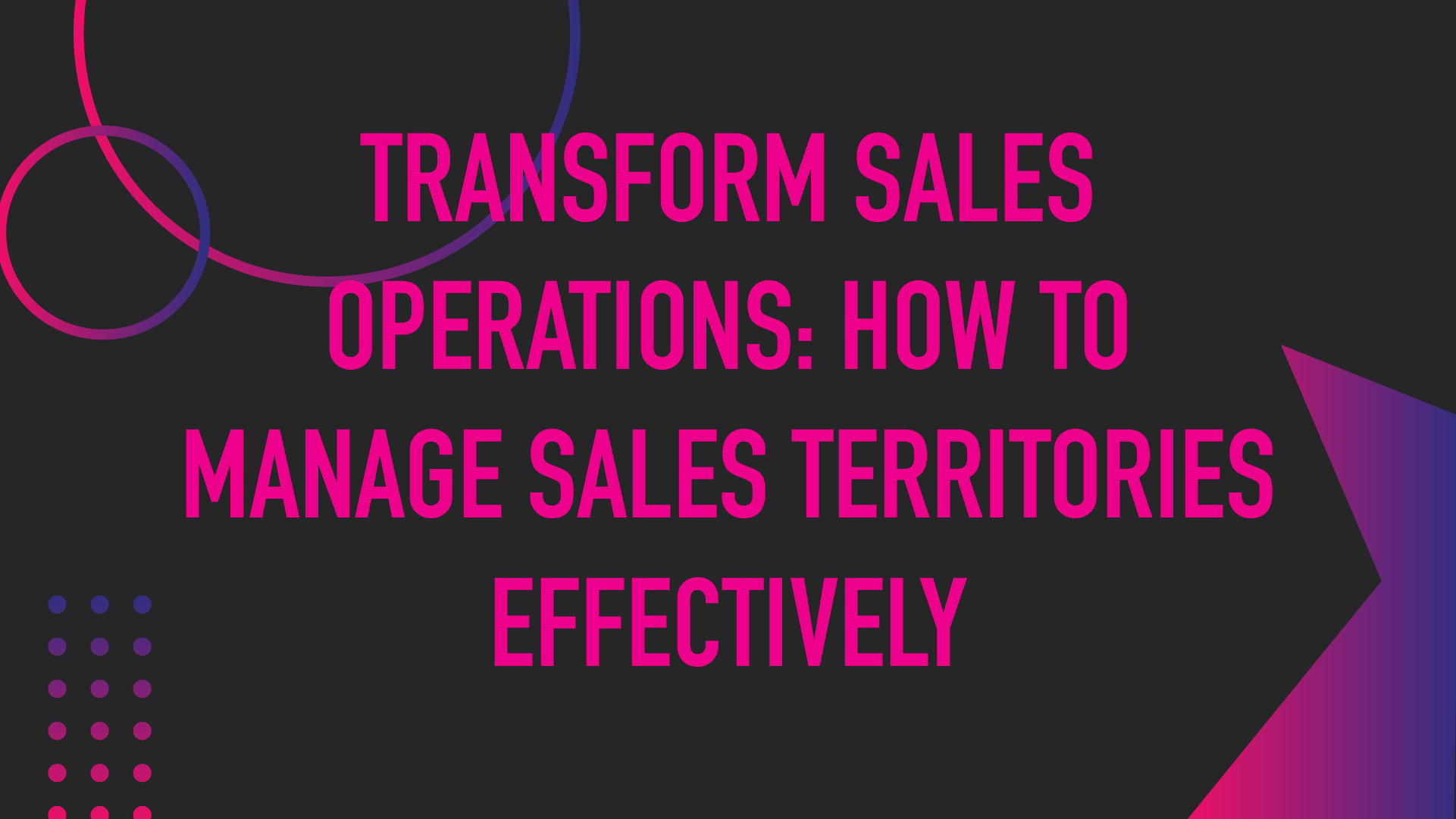7 Key Retail Execution Functions for Store and Field Teams to Master


Mastering retail execution is crucial for store and field teams to stay ahead of the competition. From meticulous planning and seamless execution to automation and continuous optimization, these functions form the backbone of successful retail operations. Whether you're looking to enhance store tasking and merchandising or leverage the power of analytics and AI, focusing on these critical areas will empower your teams to deliver exceptional performance and drive growth.
Reimagine Store Tasking and Merchandising
Merchandising strategies are the secret sauce behind customer engagement, sales performance, and a store's overall atmosphere. When product displays are carefully curated, in-store displays create eye-catching environments that attract customers and make them want to explore. Coordinating these efforts across multiple store locations requires a deep understanding of consumer behavior and market trends and the flexibility to adapt strategies to local preferences. Retail teams need to blend data-driven insights with creative merchandising techniques to craft unique, engaging experiences for each store.
 The complexity of store tasking and merchandising lies in balancing operational efficiency with aesthetic appeal, ensuring stores are well-stocked, products are attractively displayed, and promotions are executed seamlessly. This requires multiple layers of planning and execution, each requiring attention to detail and adaptability to market dynamics. Well-executed strategies lead to increased foot traffic, higher conversion rates, and improved customer satisfaction. Conversely, poor execution can result in lost sales opportunities, excess inventory, and a subpar shopping experience.
The complexity of store tasking and merchandising lies in balancing operational efficiency with aesthetic appeal, ensuring stores are well-stocked, products are attractively displayed, and promotions are executed seamlessly. This requires multiple layers of planning and execution, each requiring attention to detail and adaptability to market dynamics. Well-executed strategies lead to increased foot traffic, higher conversion rates, and improved customer satisfaction. Conversely, poor execution can result in lost sales opportunities, excess inventory, and a subpar shopping experience.
Five ways to improve store tasking and merchandising
- Planogram Compliance: Sticking to planograms, or visual schematics, is crucial for consistent product placement and inventory management. Planogram compliance ensures each product is positioned to catch the customer's eye and facilitates easy store navigation.
- Inventory Management: Efficient inventory management is vital to keep shelves stocked with high-demand items without overstocking less popular products. This involves real-time tracking, demand forecasting, and timely restocking.
- Visual Merchandising: A key aspect is creating visually appealing displays that captivate customers and drive impulse purchases. This includes strategic product placement, thematic displays, and the use of props and signage to craft an inviting shopping environment.
- Promotional Execution: Coordinating promotional activities like sales, discounts, and special events requires precise execution to maximize impact. This includes timely display setup, clear communication of offers, and monitoring effectiveness.
- Task Management Systems: Implementing robust task management systems enables managers to assign, track, and complete tasks efficiently. These systems provide visibility into task progress, streamline communication, and ensure accountability.
Adapting to seasonal trends, consumer preferences, and competitive actions is essential for staying relevant. Brands that excel in store tasking and merchandising better position themselves to respond to market changes, introduce new products effectively, and capitalize on promotional opportunities.
Mastering store tasking and merchandising offers a substantial competitive advantage. Retailers who invest in advanced technologies, such as AI-driven analytics and automated task management systems, achieve greater precision and efficiency. These tools enable data-driven decision-making, allowing retailers to optimize product placement, predict demand patterns, and personalize the shopping experience.
Reimagine store tasking and merchandising →
Mastering Workforce Coordination
Empowering teams is foundational to success. Effective scheduling and workforce enablement drive productivity, foster employee satisfaction, and maintain seamless operations. The key lies in balancing business objectives and nurturing the workforce.
Scheduling and workforce enablement are complex because they involve juggling multiple variables, such as employee availability, skill levels, labor laws, and business requirements. Ensuring the right people are in the right place at the right time means sophisticated planning and real-time adjustments.
Strategies for Enhanced Productivity and Satisfaction
- Dynamic Scheduling Systems: Implementing dynamic scheduling systems that adapt in real time is crucial. These systems should leverage data analytics and machine learning to predict demand, optimize shift patterns, and accommodate employee preferences. By doing so, businesses can minimize understaffing or overstaffing issues and enhance operational efficiency.
- Compliance with Labor Laws: Ensuring compliance with labor laws and regulations is critical to scheduling. This includes adhering to maximum working hours, mandatory breaks, and other legal requirements. Effective scheduling systems must incorporate these regulations to avoid legal penalties and ensure fair treatment of employees.
- Skill-Based Scheduling: Assigning tasks and shifts based on employee skills and qualifications ensures that the most capable individuals handle critical functions. This improves service quality and enhances employee satisfaction by aligning job roles with personal competencies and career aspirations.
- Employee Empowerment and Engagement: Empowering employees with self-service tools that let them view schedules and assignments ahead of time can significantly boost morale and engagement. Transparent and flexible scheduling practices make employees feel valued and respected, leading to higher retention rates and improved performance.
- Workforce Analytics: Leveraging workforce analytics to gain insights into productivity trends, absenteeism, and employee preferences can inform better scheduling decisions. Organizations can address potential issues proactively and optimize workforce utilization by understanding patterns and predicting future needs.
 Organizations must adapt their scheduling strategies to accommodate changes as work evolves with more flexible and remote working arrangements. This requires shifting from traditional scheduling models to more agile and employee-centric approaches. Brands that successfully navigate this complex landscape often find their teams more engaged, efficient, and better prepared to deliver exceptional customer experiences.
Organizations must adapt their scheduling strategies to accommodate changes as work evolves with more flexible and remote working arrangements. This requires shifting from traditional scheduling models to more agile and employee-centric approaches. Brands that successfully navigate this complex landscape often find their teams more engaged, efficient, and better prepared to deliver exceptional customer experiences.
Organizations that invest in advanced scheduling technologies and prioritize workforce well-being are better positioned to attract and retain quality talent. Happy and engaged employees are more productive, provide better customer experiences, and contribute to a positive workplace culture.
Prioritize Item Management and Ordering
Item management and ordering are the lifelines of well-stocked shelves, satisfied customers, and streamlined supply chains. It’s a high-stakes game where precision is non-negotiable. Team leads must keep a sharp eye on inventory levels, forecast demand with pinpoint accuracy, and strategically place orders to ensure products are available precisely when and where they’re needed.
is non-negotiable. Team leads must keep a sharp eye on inventory levels, forecast demand with pinpoint accuracy, and strategically place orders to ensure products are available precisely when and where they’re needed.
Managing these tasks is complex, demanding a proactive strategic approach. Efficient management ensures businesses meet customer demand without incurring excessive inventory costs, whereas poor practices lead to lost sales, increased operational costs, and unhappy customers.
Ensure your item management and ordering include:
- Inventory Accuracy: Keeping inventory records spot-on is fundamental. Regular audits, real-time tracking systems, and integration with sales data ensure inventory levels reflect actual stock.
- Demand Forecasting: It is critical to nail down customer demand predictions. Advanced demand forecasting techniques, like predictive analytics and machine learning, analyze historical data, market trends, and seasonal variations. Accurate forecasting helps place timely orders and optimize inventory levels.
- Supplier Relationship Management: Building solid relationships with suppliers is critical. This includes negotiating favorable terms, ensuring timely deliveries, and maintaining open lines of communication. Effective supplier management ensures orders are fulfilled promptly and accurately.
- Automated Ordering Systems: Streamlining the ordering process with automated systems reduces manual errors and boosts efficiency. These systems generate orders based on preset thresholds and real-time inventory data, maintaining stock levels without overburdening staff.
- Just-in-Time (JIT) Inventory: Adopting a JIT inventory approach minimizes carrying costs and reduces the risk of obsolete stock. This strategy requires precise coordination with suppliers and accurate demand forecasting to ensure inventory arrives just in time for production or sale.
These strategies are not optional but essential for maintaining a competitive edge in today's fast-paced market. By implementing these practices, teams can streamline operations, reduce costs, and consistently meet customer demands.
Manage the entire lifecycle of in-store inventory →
Strategic Communication for Enhanced Collaboration
Communication is the bedrock of organizational success. It ensures the smooth flow of information, fosters collaboration, and aligns with strategic goals. The multifaceted nature of communication across teams and vendors presents unique challenges as organizations navigate multiple channels and manage various message types.
The intricacies of organizational communication stem from the need to coordinate messages across various departments, geographical locations, and stakeholder groups. From direct and group messaging to broadcasting and announcements, ensuring the right information reaches the right people at the right time requires thoughtful planning and advanced communication tools.
Communication Pillars:
- Internal Communications: Effective internal communications foster a cohesive organizational culture and ensure employees are informed, engaged, and aligned with company goals. This involves regular updates, clear leadership messaging, and two-way communication mechanisms.
- External Communications: Managing external communications involves interacting with customers, partners, investors, and the public. Consistency in messaging and the ability to effectively address inquiries or feedback is essential. This also encompasses marketing, public relations, and corporate social responsibility efforts.
- Crisis Communication: Preparing for and managing communication during crises is vital to mitigate damage to the organization's reputation and maintain stakeholder trust. This often includes developing crisis communication plans, training spokespeople, and ensuring rapid, accurate information dissemination during emergencies.
- Cross-Departmental Collaboration: Effective communication between departments and teams is essential for operational efficiency and innovation. Create platforms and processes for regular inter-departmental updates, collaborative projects, and knowledge sharing.
 Poor communication can lead to misunderstandings, reduced morale, and even impact brand reputation. Teams need practical tools and established strategies that streamline information flow and enhance overall operational efficiency, contributing to a more responsive and agile environment. Organizations that invest in advanced communication technologies and comprehensive strategies can achieve greater clarity, consistency, and engagement in their messaging.
Poor communication can lead to misunderstandings, reduced morale, and even impact brand reputation. Teams need practical tools and established strategies that streamline information flow and enhance overall operational efficiency, contributing to a more responsive and agile environment. Organizations that invest in advanced communication technologies and comprehensive strategies can achieve greater clarity, consistency, and engagement in their messaging.
Communication for collaboration →
Optimization That Scales
Optimization tools are transforming business operations in extraordinary ways. From advanced data processing to fully automated processes, these cutting-edge technologies boost efficiency and streamline planning for store and field team leaders, allowing for a more productive and efficient workforce.
With AI-driven analytics, teams can predict trends and optimize resource allocation, allowing them to respond swiftly to market changes and emerging demands. As organizations grow, these systems can seamlessly scale to handle increasing data volumes and complexity, ensuring that analytic capabilities expand in tandem with business needs. This scalability enables companies to maintain their competitive edge and leverage data-driven insights, regardless of size or operational scope.
Transform Business Operations with Scalable Optimization Tools
- Algorithmic Optimization: Utilize advanced algorithms to enhance operational efficiency and decision-making. This includes optimizing supply chain logistics, resource allocation, and production schedules to minimize costs and maximize output.
- Image Recognition and Analysis: Implement AI-driven image recognition technologies to automate the analysis and categorization of visual content to streamline quality control processes, inventory management, and product identification.
- Predictive Analytics: Apply optimization techniques and AI to predict market trends, consumer demands, and operational bottlenecks. These predictive analytics enable businesses to proactively address challenges and capitalize on emerging opportunities.
- Territory and Route Optimization: Advanced algorithms and AI-driven tools can analyze geographic data, traffic patterns, and customer locations to determine the most efficient routes and territories. This reduces travel time and fuel costs and improves service delivery and customer satisfaction.
These technologies are unlocking new possibilities for improvement and growth, fundamentally transforming business operations, increasing efficiency, reducing costs, and improving customer experiences. However, mastering these technologies isn't just about adopting new tools—it's about fundamentally rethinking how business processes are managed. Integration requires a deep understanding of both technological capabilities and business needs. Leaders must be prepared to address the inherent complexities of key operational areas before implementation.
Optimizations for shelf success →
Transforming Data into Actionable Insights
The industry is witnessing a transformative shift as analytics takes center stage in driving informed decision-making. This powerful tool isn't just a buzzword; it's becoming essential for optimizing operations and gaining a competitive edge. The beauty of analytics is its ability to transform raw data into actionable insights. When harnessed correctly, it can reveal patterns and trends that might otherwise remain hidden, enabling retail teams to make more informed decisions.
However, analytics has its complexities. It involves the intricate process of collecting, processing, and interpreting increasingly vast amounts of data from various sources. This complexity is amplified by the need to ensure data quality and apply the proper analytical techniques to extract meaningful insights.
Leverage analytics for success
- Data Integration: Integrate data from multiple sources, such as sales, marketing, operations, and customer feedback, to create a comprehensive business view. Establishing data pipelines, ensuring data consistency, and creating a unified data architecture enables teams to accurately assess and utilize the available data.
- Data Quality and Governance: Maintain high data quality and governance standards to ensure accurate and reliable insights. This includes data cleaning, validation, and establishing data management and security protocols.
- Descriptive Analytics: Utilize descriptive analytics to summarize historical data and understand past performance. Data visualization tools transform raw numbers into compelling visual stories, offering retail professionals a clear view of their business landscape. These tools craft intuitive reports, interactive dashboards, and eye-catching visualizations highlighting crucial KPIs and emerging market trends.
- Prescriptive Analytics: Leverage prescriptive analytics to recommend actions based on data-driven insights. This involves optimizing business processes, resource allocation, and strategic planning by identifying the best course of action among various alternatives. The result is a more informed, efficient, and competitive retail operation that can adapt quickly to changing market conditions and consumer preferences.
Implementing robust analytics frameworks and leveraging advanced tools requires strategic planning and technical expertise. It's not just about having the data; it's about knowing how to use it effectively to drive business value. This involves sophisticated data processing, visualization, and interpretation to support strategic initiatives.
Industries are experiencing a profound shift towards data-driven decision-making. Teams that embrace analytics and develop the skills to interpret complex data sets are positioning themselves for success in this evolving landscape. While mastering analytics may present challenges, the benefits for industry leaders and frontline workers are substantial.
Vendor Collaboration for Supply Chain Success
 Vendor collaboration is the backbone of smooth supply chain operations and a driver of innovation in the retail industry. Managing relationships with multiple suppliers, coordinating logistics, and aligning objectives across various parties are complex but essential tasks. Effective vendor collaboration is critical to achieving operational efficiency and maintaining a competitive edge.
Vendor collaboration is the backbone of smooth supply chain operations and a driver of innovation in the retail industry. Managing relationships with multiple suppliers, coordinating logistics, and aligning objectives across various parties are complex but essential tasks. Effective vendor collaboration is critical to achieving operational efficiency and maintaining a competitive edge.
The heart of effective vendor collaboration is navigating the complexities between different organizations, each with unique processes, capabilities, and priorities. Teams need seamless integration and mutual alignment through strategic planning, continuous communication, and cutting-edge technologies.
Benefits of Vendor Collaboration
- Relationship Management: Building and maintaining strong vendor relationships is fundamental. This involves regular communication, mutual trust, and a commitment to shared goals. Strong relationships help navigate challenges and foster long-term partnerships.
- Supply Chain Integration: Seamless supply chain integration requires synchronized planning, real-time data sharing, and coordinated logistics. Integrated supply chain management systems streamline processes and enhance visibility across production and distribution stages.
- Performance Metrics and Evaluation: Establishing clear performance metrics and regularly evaluating vendor performance is crucial. Tracking key performance indicators (KPIs) like delivery times, quality standards, and cost efficiency helps identify areas for improvement and fosters continuous enhancement.
- Risk Management: Effective risk management strategies are essential for mitigating supply chain disruptions. Identifying potential risks, developing contingency plans, and collaborating with vendors ensure resilience and maintain supply chain stability.
- Innovation and Co-Development: Collaborating with vendors on innovation and product development drives significant competitive advantage. Joint research and development efforts, sharing insights, and co-creating solutions meet evolving market demands, accelerating time-to-market and enhancing product offerings.
Industry leaders are increasingly adopting sophisticated vendor collaboration strategies, recognizing their potential to streamline operations and boost business performance. Strong partnerships with suppliers tap into a well of expertise, drive product innovation, and respond swiftly to changing market demands.
However, successful vendor collaboration is not without hurdles. It requires addressing data sharing, trust-building, and system integration challenges. Overcoming these requires transparency, standardized processes, and investment in collaborative technologies. While challenging upfront, mastering vendor collaboration positions businesses to thrive in a competitive market. Embracing this complex yet rewarding aspect of operations unlocks opportunities for growth, efficiency, and customer satisfaction.
Vendor collaboration for effect execution →
Ready to Transform Your Retail Operations?
Experience firsthand how Movista can revolutionize your store and field team performance across essential retail functions with a unified solution. From optimizing store tasking and merchandising to enhancing workforce enablement and streamlining item management, our cutting-edge solutions are designed to drive efficiency, boost sales, and elevate your customer experience.
Don't miss out on the opportunity to see Movista in action. Schedule a demo today and discover how our innovative platform can help you master retail execution, leverage analytics, and foster seamless vendor collaboration.
featured content
featured content

The Importance of On-Shelf Availability in Retail: Why Keeping Items Stocked is Critical for Competitiveness in 2026
Learn why on-shelf availability is critical in today's retail store environment








